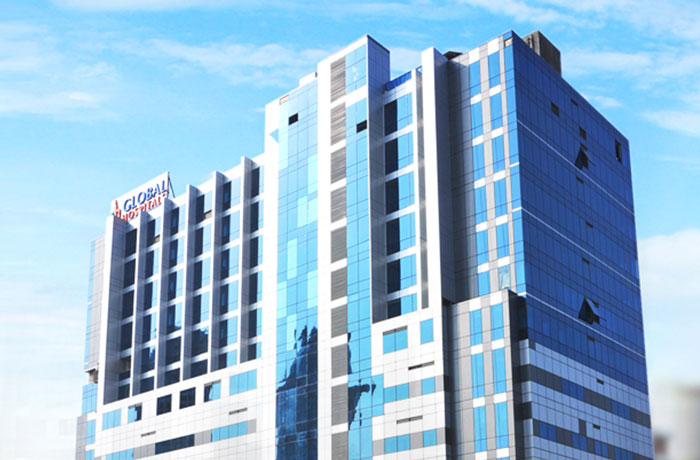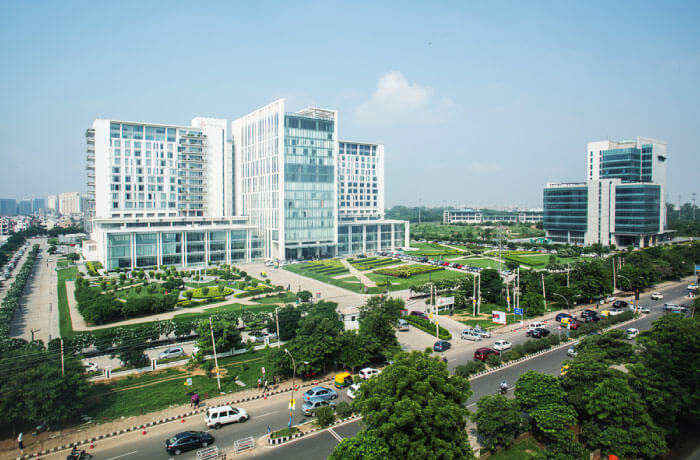Pediatrics
Sacrococcygeal Teratoma
Sacrococcygeal Teratoma
Sacrococcygeal teratoma is a rare tumor at the base of a baby's tailbone. Usually benign, it requires surgical removal soon after birth to prevent complications and ensure healthy development.
What is Sacrococcygeal teratoma?
It is a tumor that results from coccyx (tailbone) regrowth in a fetus or infant. It is a germ cell tumor made up of embryonic cells, which is usually non-malignant but occasionally can be malignant. The most common of such tumors in newborns is SCT which is more prevalent in females.
Definition and Origin
SCT is a product of remnants of primitive streak cells around the coccyx and one of the type I germ cell tumors. The tumor may be external, internal, a combination of the two, may be large, bulge outward or even into the pelvic cavity. Its formation has to do with early embryonic development cells which have the ability to develop into different types of tissues.
Types
Four types are depending on the location of tumors:
- Type I: totally external to the body.
- Type II: predominantly external and a few internal to the pelvis.
- Type III: characterised by most of them being located on the inside of the abdomen with some protrusion.
- Type IV: completely internal
Sacrococcygeal teratoma surgery
Complete excision of the tumor is the operation for a sacrococcygeal Teratoma (SCT) to reduce the chance of recurrence. The regular one is an en bloc resection which is the removal of the tumor and coccyx together to be sure that all the tumor cells have been removed.
Sacrococcygeal teratoma removal procedure
- In order to reduce the chances of malignancy, the operation is usually performed within the first two months of life.
- The child is placed under general anaesthesia and an incision usually is made over the buttocks around the tumor.
- In case tumors spread to the abdomen (Types III or IV), an abdominal incision can be topped to reach and excise internal organs.
- In surgery, the blood vessels that are supplying the tumor are sealed efficiently to reduce the amount of blood loss.
- The capsule is removed thoroughly to ensure that the surrounding tissues are not affected thus avoiding neurological damage by limiting the number of nerve roots removed.
- The coccyx is excised because the tumor has its origin on this bone and failure to remove it predisposes one to likelihood of tumor recurrence.
- A two stage anterior and posterior approach with cooperation of pediatric surgeons and neurosurgeons might be required in difficult cases, especially if intraspinal or presacral extension is present.
Preoperative and Postoperative Care
- Preoperative imaging (MRI, ultrasound) may help to evaluate the size and vascularity of the tumor.
- Tumor marker tests including alpha-fetoprotein (AFP) blood test are utilised in diagnosis and monitoring response to treatment. The imaging and AFP measurements during postoperative monitoring are done to identify a recurrence of the tumor.
- Complications of surgery can include damage to local nerves that control the bowel, bladder or lower limb, although every precaution is taken intraoperatively to minimise the adverse effects.
- The early recurrence must be detected and any functional deficit compensated in the long term.
Pediatric sacrococcygeal teratoma
SCT is a germ cell tumor that is diagnosed at birth or in the infancy period until early childhood and arising from the coccygeal region. It may be malignant or benign and early investigation and treatment had a favourable result.
Sacrococcygeal teratoma symptoms
Symptoms before and after birth
- Rapid tumor growth can lead to blood shunting, straining the fetal heart, and resulting in fetal heart failure (hydrops fetalis) – a condition in which fluid accumulates under the skin, in the chest (pleural effusion), in the abdominal cavity (ascites), and around the heart (pericardial effusion).
- The mother of a tumor bearing-fetus may also develop polyhydramnios (too much amniotic fluid).
- The mass may compress the fetal urinary tract and cause obstruction of the urinary tract and hydronephrosis.
- Fetal anemia can be the result of tumor rupture or hemorrhaging within the amniotic sac.
- Bulky embryonic tumors may create problems during birth, such as dystocia.
- In others, the mother may develop mirror syndrome (manifestations of pre-eclampsia: the blood pressure is elevated, the urine contains small amounts of proteins, the body swells, the patient is dyspneic).
Symptoms after birth
- It is also typical to feel or see a mass at the bottom of the tailbone.
- Infants that have internal tumors can have urinary stagnation, constipation, or bowel stagnation.
- Less frequently, compression of the tumor on the nerves may lead to weakness of the lower limbs or changes in sensation.
- There may be hemorrhage or infection as a result of tumor pathology.
Sacrococcygeal teratoma diagnosis
The diagnosis of sacrococcygeal teratoma (SCT) is largely established by prenatal and postnatal imaging of the mass, along with the determination of tumor markers.
Prenatal Diagnosis
- The initial and the most employed method in the detection of SCTs is a routine prenatal ultrasound, which is likely to be viewed as a mass that appears on the tailbone of the fetus as it sticks out to the outside or inwards.
- Tumor vascularity and fetal blood flow can be measured using doppler ultrasound to determine a high output cardiac state or fetal compromise.
- Prenatal MRI is an important supplement of ultrasound giving in-depth details of the size or the composition of the tumor (solid or cyst), its extension into the pelvis and abdominal cavity and its compression of other organs. MRI is particularly applicable in surgical planning and determining complicated tumors.
- A combination of ultrasound and MRI enhances accuracy in separating SCT and other types of sacral masses such as meningomyelocele.
- Fetal echocardiography checks heart activity on the possible presence of high-output cardiac failure due to the big tumors.
Postnatal Diagnosis
- Physical examination - It involves palpation or visualization of a mass at the sacrococcygeal area.
- Post-birth MRI or ultrasound imaging assists in determining the extension of the tumor and its connections with the pelvic structures.
- Blood tests that check alpha-fetoprotein (AFP) aid in diagnosis and surveillance therapy; high AFP levels are normal except that it should be reduced after removal of the tumor.
- The diagnosis of benign or malignant tumor, as well as the diagnosis of the tumor, is done through a histopathological examination of the removed tumor.
Best hospital for sacrococcygeal teratoma surgery India
- Artemis Hospital, Gurgaon
- Medanta-The Medicity, Gurgaon
- Fortis Memorial Research Institute, Gurgaon
- Max Hospital, Saket
Conclusion
Sacrococcygeal teratoma (SCT) is a very unusual congenital germ cell neoplasm, which is in the tailbone base, and is mostly diagnosed before birth or immediately after birth. The probability of the condition is higher in females, and the disease is commonly diagnosed via prenatal ultrasound or MRI. Early diagnosis is the secret to successful treatment and fewer complications. The surgical excision of the tumor with the coccyx is necessary to avoid relapse. It could be noted that in situations of giant or highly vascular tumors, fetal surgery or minimally invasive surgery might be a time-saving method prior to birth to minimize dangers like fetal heart failure. The surgery is normally carried out at a young age of less than two months of age where it is an operation that is done to ensure that the whole structure of the organ is removed with extreme care that neighbouring structures are not disturbed to minimize complications.
Sacrococcygeal teratoma surgery India GetWellGo
GetWellGo is regarded as a leading supplier of healthcare services. We help our foreign clients choose the best treatment locations that suit their needs both financially and medically.
We offer:
- Complete transparency
- Fair costs.
- 24 hour availability.
- Medical E-visas
- Online consultation from recognized Indian experts.
- Assistance in selecting India's top hospitals for Sacrococcygeal teratoma treatment.
- Expert surgeon with a strong track record of success
- Assistance during and after the course of treatment.
- Language Support
- Travel and Accommodation Services
- Case manager assigned to every patient to provide seamless support in and out of the hospital like appointment booking
- Local SIM Cards
- Currency Exchange
- Arranging Patient’s local food
FAQ
How common is SCT?
- There is a female preponderance and the frequency of the occurrence of SCT is 1 in 20,000 to 40,000 live births.
What is the prognosis?
- Majority of children perform very well when surgery is performed at an early age. Recurrence may follow, and long-term follow-up is required using AFP and imaging.
Is fetal surgery ever done?
- In infrequent situations of fetal heart failure or huge tumors, fetal surgery or laser ablation to decrease the blood flow can be taken into account.
What follow-up care is needed?
- Repeated clinical examination, level of AFP, and imaging during some years after surgery to check recurrence or complication.
TREATMENT-RELATED QUESTIONS
GetWellGo will provide you end-to-end guidance and assistance and that will include finding relevant and the best doctors for you in India.
A relationship manager from GetWellGo will be assigned to you who will prepare your case, share with multiple doctors and hospitals and get back to you with a treatment plan, cost of treatment and other useful information. The relationship manager will take care of all details related to your visit and successful return & recovery.
Yes, if you wish GetWellGo can assist you in getting your appointments fixed with multiple doctors and hospitals, which will assist you in getting the second opinion and will help you in cost comparison as well.
Yes, our professional medical team will help you in getting the estimated cost for the treatment. The cost as you may be aware depends on the medical condition, the choice of treatment, the type of room opted for etc. All your medical history and essential treatment details would be analyzed by the team of experts in the hospitals. They will also provide you with the various types of rooms/accommodation packages available and you have to make the selection. Charges are likely to vary by the type of room you take.
You have to check with your health insurance provider for the details.
The price that you get from GetWellGo is directly from the hospital, it is also discounted and lowest possible in most cases. We help you in getting the best price possible.
No, we don't charge patients for any service or convenience fee. All healthcare services GetWellGo provide are free of cost.
Top Doctors for Pediatrics
Top Hospitals for Pediatrics
Contact Us Now!
Fill the form below to get in touch with our experts.







